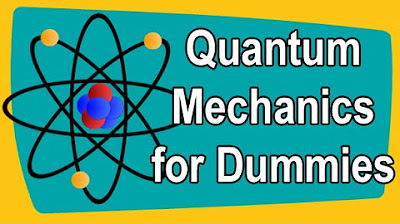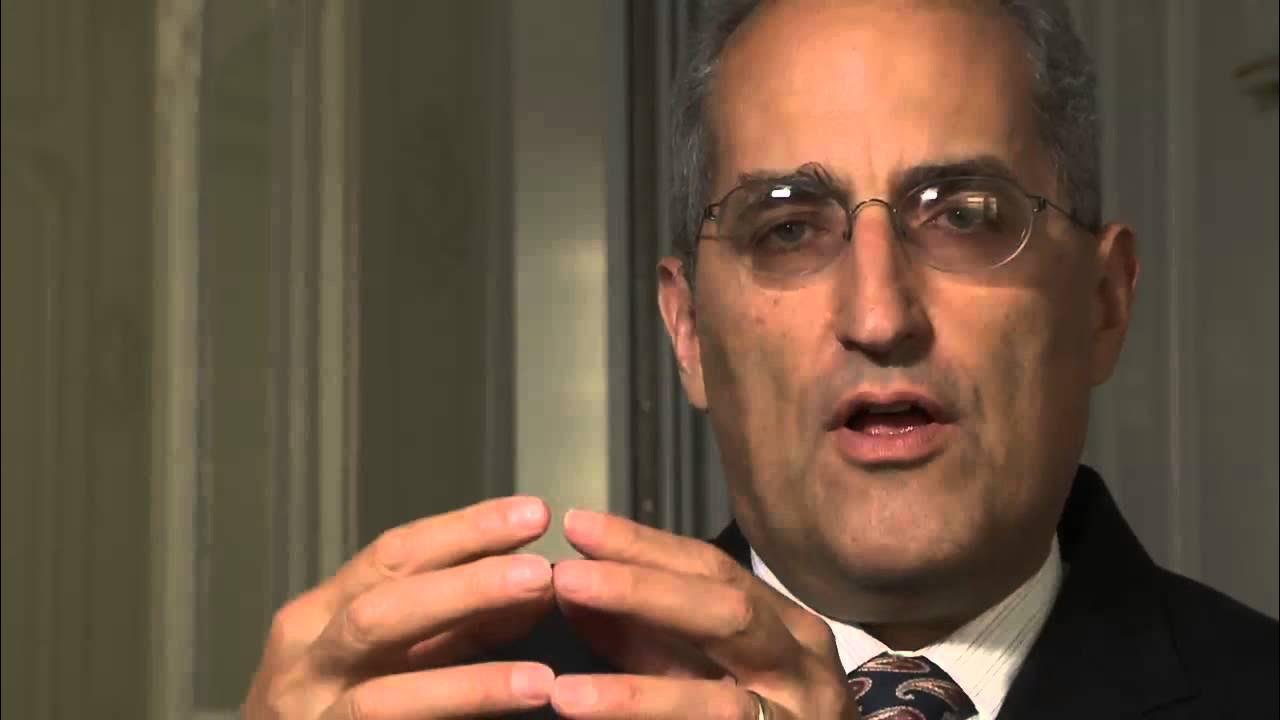The History of Physics (Part 2)
TLDRThis script takes us on a journey through the significant scientific discoveries of the 20th century, highlighting the evolution of our understanding of the atom, the development of quantum mechanics, and the advent of theories like special and general relativity. It discusses the discovery of subatomic particles such as electrons, protons, and neutrons, and introduces concepts like wave-particle duality and superconductivity. The narrative also touches on the revolutionary theories of nuclear fission and the development of atomic weapons, as well as the ongoing quest for a theory of everything, with mentions of string theory and the Higgs boson. The script is a rich tapestry of scientific advancements that shaped our modern world.
Takeaways
- 🌟 The discovery of the electron in 1897 by JJ Thompson confirmed the existence of subatomic particles and led to the development of atomic models.
- 📜 The plum pudding model proposed by JJ Thompson in 1904 was an early attempt to describe the structure of the atom, with electrons scattered like plums in pudding.
- 🥊 Rutherford's gold foil experiment led to the discovery of the nucleus and the proton, showing a concentrated positive charge and paving the way for a new atomic model.
- 🌠 Einstein's special relativity introduced the concept that the speed of light is constant for all observers, leading to phenomena like time dilation.
- 🌐 General relativity, developed by Einstein, explained gravity as the curvature of spacetime caused by mass, significantly advancing our understanding of the universe.
- 🥂 Superconductors, discovered in 1911, exhibit zero electrical resistance and can expel magnetic fields, leading to technological advancements like maglev trains.
- ❄️ Superfluids, observed in 1937, are a state of matter where liquids exhibit no viscosity and can flow without resistance, even up the sides of a container.
- 🔬 The cloud chamber, invented by Charles Wilson, was instrumental in detecting and studying ionized particles, contributing to the field of particle physics.
- 🌌 Cosmic rays, first detected in 1912, are high-energy particles from space that can produce a cascade of lighter particles upon entering Earth's atmosphere.
- 🤹♂️ Wave-particle duality, demonstrated by George Thompson's double-slit experiment with electrons, shows that particles can exhibit both particle and wave-like properties.
- 💥 Nuclear fission, discovered in 1938, involves the splitting of atomic nuclei, releasing a large amount of energy and leading to the development of nuclear power and weapons.
Q & A
When was the concept of the electron first theorized?
-The concept of the electron was first theorized in 1838 by philosopher Richard Lamy.
Who proved the existence of electrons and how did they do it?
-Physicist JJ Thompson proved the existence of electrons in 1897 by running experiments with cathode rays and demonstrating that they deflected due to an electric field, thus proving they were negatively charged particles.
What is the plum pudding model of the atom?
-The plum pudding model, proposed by JJ Thompson in 1904, suggested that electrons made up a small portion of the atom and were scattered throughout like plums in a pudding, with positive charge being spread out as well.
What significant discovery did Rutherford make about the atomic structure?
-Rutherford discovered that atoms have a concentrated positive charge in a small volume, which he called the nucleus, through his gold foil experiment involving alpha particles.
What is the significance of the discovery of the proton?
-The discovery of the proton, made by Rutherford, provided a more accurate understanding of the atom's structure, showing that positive charges come in single units and are nearly two thousand times heavier than an electron.
What is special relativity and who proposed it?
-Special relativity, proposed by Albert Einstein, is a theory that states the speed of light in a vacuum is the same for all observers regardless of the motion of the light source, introducing concepts like time dilation and the idea that nothing can exceed the speed of light.
What is the significance of the general theory of relativity?
-The general theory of relativity, also by Einstein, is a more advanced theory that explains gravity and how mass bends space and time, allowing for a more accurate understanding of large-scale phenomena like the orbit of Mercury and the behavior of black holes.
What is a superconductor and how does it work?
-A superconductor is a material that, when cooled to very low temperatures, has zero electrical resistance, allowing electrons to move through it freely. This property enables applications like maglev trains and efficient electric power transmission.
What is a superfluid and what are its unique properties?
-A superfluid is a state of matter that occurs when a liquid is cooled to very close to absolute zero. It has no viscosity, allowing it to flow without resistance, and can exhibit phenomena like climbing the walls of a container and forming perpetually rotating vortices when stirred.
What is the cloud chamber and how did it contribute to the study of particle physics?
-The cloud chamber is a device used to detect and study particles by making visible the trails of ionization they create in a supersaturated vapor. It significantly advanced the study of particle physics by allowing scientists to observe phenomena that were not detectable by the human eye.
What is the double-slit experiment with electrons and what does it demonstrate?
-The double-slit experiment with electrons, conducted by George Thompson, showed that electrons produce an interference pattern when passed through two slits, indicating that they exhibit wave-particle duality, behaving as both a particle and a wave.
What is nuclear fission and how does it lead to a chain reaction?
-Nuclear fission is the process where an atomic nucleus splits into two or more smaller nuclei, releasing energy and neutrons in the process. These released neutrons can then cause more nuclei to split, creating a chain reaction that can release massive amounts of energy.
Outlines
🌀 Discovery of Subatomic Particles and Theories of Atom Structure
This paragraph discusses the historical discovery and understanding of the three subatomic particles: electrons, protons, and neutrons. It begins with the electron, first theorized by Richard Lamy in 1838 and proven to exist by JJ Thompson in 1897 through cathode ray experiments. The paragraph then describes the evolution of atomic models, from the plum pudding model proposed by Thompson in 1904 to the nuclear model introduced by Rutherford after his gold foil experiment. Rutherford's findings led to the discovery of the proton, and eventually, the neutron was found more than a decade later. The paragraph also touches on the concept of special relativity by Einstein, which introduced the idea that the speed of light is constant for all observers, leading to phenomena such as time dilation.
🌠 Einstein's Theories and the Advancements in Understanding the Very Large and Very Cold
This paragraph delves into Einstein's general relativity, a theory that built upon special relativity to explain gravity and the bending of spacetime by mass. It highlights the complexity of general relativity and its ability to explain phenomena such as the orbit of Mercury, which could not be accurately predicted by Newtonian physics. The paragraph also explores the effects of extreme cold on materials, leading to the discovery of superconductors and superfluids. Superconductors, with their zero electrical resistance, have potential applications in power transmission and particle detection, while superfluids exhibit unique properties like the absence of viscosity and the ability to climb container walls. The paragraph concludes with the story of the cloud chamber, initially designed to create clouds but serendipitously becoming a crucial tool in the detection of ionized gas trails and the study of particle physics.
🌐 Experiments and Discoveries in Particle Physics and Cosmic Rays
This paragraph covers significant experiments and discoveries in particle physics, including the double-slit experiment with electrons that demonstrated wave-particle duality, the non-influence of electric fields on a new type of radiation leading to the discovery of the neutron, and the study of cosmic rays. It explains how early experiments showed that cosmic rays originate from space and not from the Earth, and how these rays consist of high-energy particles like protons and alpha particles. The paragraph also discusses the discovery of the muon, a heavy, negatively charged particle, and how its existence provided evidence for time dilation as predicted by Einstein's special theory of relativity.
💥 Nuclear Fission, the Discovery of Quarks, and the Development of the Standard Model
The final paragraph discusses the discovery of nuclear fission, where the uranium nucleus splits into two, releasing a large amount of energy and neutrons that can trigger a chain reaction. This discovery was pivotal in the development of atomic bombs and nuclear power. The paragraph then moves on to the proposal of quarks as the fundamental constituents of protons and neutrons, and their confirmation through experiments at the Stanford Linear Accelerator. It also touches on string theory as a potential candidate for a theory of everything, which attempts to unify quantum mechanics and general relativity. The paragraph concludes with the discovery of the Higgs boson, a particle that explains the origin of mass for subatomic particles, and its confirmation at CERN's Large Hadron Collider, as well as the ongoing efforts to understand and explain all forces and matter in the universe through the standard model.
Mindmap
Keywords
💡Subatomic Particles
💡Electron
💡Cathode Rays
💡Plum Pudding Model
💡Gold Foil Experiment
💡Nucleus
💡Special Relativity
💡General Relativity
💡Superconductivity
💡Higgs Boson
Highlights
The concept of the electron was first theorized in 1838 by philosopher Richard Lamy.
Physicist JJ Thompson proved the existence of electrons in 1897 through cathode ray experiments.
Thompson proposed the plum pudding model of the atom in 1904, where electrons were scattered like plums in pudding.
Rutherford's gold foil experiment led to the discovery of the nucleus and the proton in 1908.
The discovery of the neutron completed the puzzle of the three subatomic particles in the early 20th century.
Einstein's theory of special relativity introduced the concept that the speed of light is constant for all observers.
Time dilation is a consequence of special relativity, where time slows down for moving objects.
Einstein's general relativity is a beautiful physical theory that explains how mass bends space and time.
The discovery of superconductors in 1911 revolutionized the understanding of electrical resistance at very low temperatures.
Superfluids, observed in 1937, exhibit奇特 properties like having no viscosity and climbing container walls.
The cloud chamber, initially designed to create clouds, became an essential tool for detecting ionized gas trails and particle physics.
Cosmic rays, discovered in the early 20th century, are high-energy particles from space that hit Earth's atmosphere daily.
The discovery of muons in 1936 provided the first evidence for time dilation as predicted by special relativity.
George Thompson's double slit experiment with electrons demonstrated wave-particle duality in 1927.
The discovery of neutrons in 1932 completed the understanding of the atom's subatomic particles.
Nuclear fission, discovered in 1938, showed that uranium nuclei could split and release massive amounts of energy.
The Manhattan Project, initiated in 1942, led to the development of the atomic bomb and demonstrated the power of nuclear fission.
The proposal of quarks in 1964 and their experimental confirmation in 1968 furthered our understanding of the subatomic structure.
String theory, emerging as a promising area of research, aims to unify quantum mechanics and general relativity.
Stephen Hawking's discovery of Hawking radiation in 1974 showed that black holes can lose mass over time.
The Higgs boson, discovered in 2012, explains the origin of mass for subatomic particles and completed the standard model.
Transcripts
5.0 / 5 (0 votes)
Thanks for rating:





